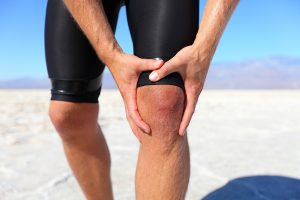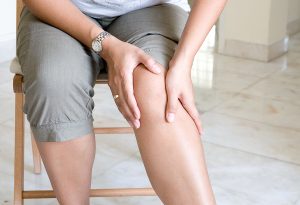Before a game or practice, warm-up exercises are essential for improving performance and lowering the risk of injury. After a game, friendly scrimmage, or practice, cool-down exercises are equally important for slowing the heart down over time instead of all at once, keeping muscles from aching, and improving the range of motion.
In 2020, the European University of Madrid released a study that offered a shocking result. They compared warm-up exercises for cyclists. The group that did not complete a warm-up before a race performed equally to the groups that did different warm-up routines. People took this as a reason to skip warm-up exercises. It’s not advised. Premium Sports & Orthopedics doctors want you to know warm-up and cool-down exercises are the most important tools you have in preventing injury.
The Benefits of Cool-Down and Warm-Up Exercises and How to Do Them Correctly
Warm-ups take place before your game or practice, and cool-downs occur after the game or practice ends. There are multiple benefits to each one.
Warm-Up Benefits:
Warm-ups are mainly completed to get your joints and muscles warmed up and ready for action. That lowers the risk of injury and increases the range of motion. Because your body is limber and ready for movement, it improves your performance, too.
The added benefit of a warm-up is mental. You’re focused on movements as you complete the different warm-up exercises. That gets your head in the game and helps psyche you up for the event at hand. You’re invigorated and ready to compete.
What exercises should you do to warm up before a game?
Start with cardio. Jog a few laps or get on the treadmill and slowly progress your speed. Ride a stationary bike, or do jumping jacks. Then move to dynamic stretches like arm circles, leg lifts, hip twists, and marching. Move from there to lunges and squats. If you’re playing a particular sport, target the exercises to the movements you make in a game.
For example, if you’re pitching in a baseball game, shoulder rotations are crucial to help limber up the shoulder joint. Sprinting helps you prepare to run bases. Squats can help a catcher get ready to catch pitches that are low to the ground.
Cool-Down Benefits:
With a cool-down, it’s time to slow things down and get back to normal. You’re no longer amped up for a scrimmage or game. You’re not focused on plays and protecting yourself or your teammates. You’re slowing down your heart to bring it back to your normal heart rate.
When you use your muscles, they need a constant supply of carbohydrates to convert to energy without using oxygen. This process called anaerobic metabolism creates lactic acid. In the past, lactic acid was blamed for muscle pain after strenuous activity.
That pain is actually your muscles recovering from microtears that happen when muscles aren’t properly warmed up before activity and exercise stops abruptly. It’s always best to keep using your muscles after a workout, which is why active recovery exercises like Yoga or walking are ideal.
Because you’re continuing to use your muscles, you boost your range of motion and flexibility. It also helps you decompress and clear your head. By taking time to move on mentally from the game, you’re going to reduce post-game mental stress where you’re distracted from blaming yourself for a loss or something you think you should have done better.
Walking is the best way to start. Slow down the pace from the running and sprinting you were doing to a brisk walk that slows down to a regular pace over several minutes. After you’ve walked a bit, stretch the muscles in your body.
You want to work on static stretches where you stretch the muscle for a minute or two and relax them. Yoga and Tai Chi are good for this type of stretching. Yoga and Tai Chi also help with deep breathing, which is good for clearing the mind and letting go of stress.
How Long Should You Spend?
There’s no exact timeline for a warm-up or cool-down. Warm-ups are usually in the 15-to-30-minute range if there’s a game or 5 to 15 minutes for practices. What’s more important is what you’re doing.
Start increasing your heart rate slowly through light aerobic and cardiovascular exercises. As your heart rate comes up, add stretches to loosen your muscles and limber up the joints. Dynamic flexibility is also important and increases exercises like lunges, marching with high knees or walking knee hugs, and squats. The goal is to start slowly and increase the intensity.
At this point, you’re ready to start the game or practice. Once it’s done, you can’t just head to the locker room, shower, and head home. A cool-down helps your body rid itself of the lactic acid produced during activity. Static stretches and deep breathing are helpful. That’s why a light Yoga workout often works well for players. Walking a few laps is also a good idea.
What If It Isn’t Enough to Prevent an Injury?
For warm-up and cool-down exercises to help, they need to be targeted to your fitness level and sport. This is why it’s best to consult with a doctor who specializes in sports fitness. The team at Premium Sports & Orthopedics is happy to go over some of the options to help improve your range of motion and flexibility, which improve your performance on the playing field, track, course, or court.
If they’re not targeted to the movements you make, there’s a risk of injury. Even with warm-ups and cool-downs, there’s still a risk of injury caused by a collision with another player, slip and fall on wet turf or grass, or sudden change of motion that damages the tendons, ligaments, or muscles. Any injury can impact your ability to stay in the game, but we’re here to help you avoid lasting injuries and damage to your bones, muscles, and joints.
Working with a sports physician is just one of many helpful options that end pain and improve endurance and stamina. Ask our team about electrical muscle stimulation (EMS) training to make sure every exercise you do fully contracts the muscles for maximum intensity and muscle toning.







